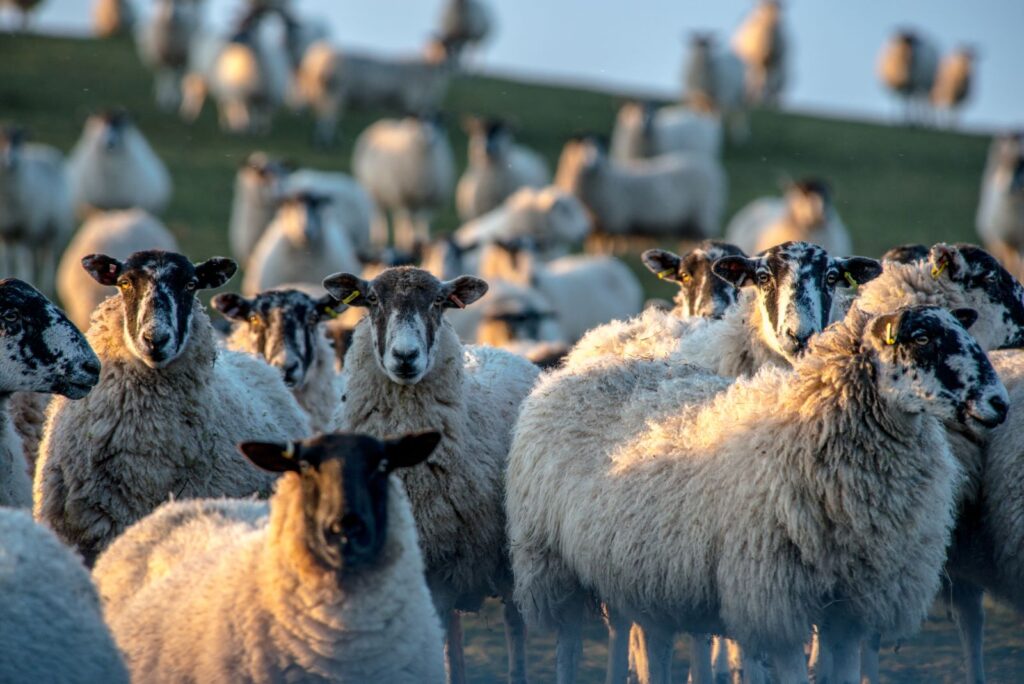Trial sheds positivity on breeding for worm tolerance
7th August 2023
To combat the growing issue of anthelmintic resistance, a recent study investigated measuring worm tolerance in lambs and the effect of genetics on how well untreated animals coped with a higher worm burden.
One of the biggest issues impacting sheep farmers currently is resistance to drenches and anthelmintics. Therefore, it’s important to find ways in which to prolong anthelmintic treatments and to breed animals which are able to tolerate parasitic infections.
Dr Mark Young, innovation specialist at CIEL (Centre for Innovation Excellence in Livestock), explained that parasites which live in the gut can cause gut damage, reducing the ability of the animal to absorb nutrients, slowing the growth of an animal, and ultimately impacting performance.
“When a parasite infection occurs, some animals will mount an immune response, which helps them to eliminate parasites, but this comes at a cost of nutrients being diverted away from growth. However, some animals continue growing without being adversely affected.
“Animals who have the strongest immune response are ‘worm resistant’ but may not be the best-performing.
“Instead, it may be better to select for animals that are able to ignore the parasite and continue growing. These animals could be considered ‘worm tolerant’”.
Dr Young went on to point out that traditional worming programmes have led to widespread resistance in parasitic worms, highlighting the need for a better understanding of worm tolerance and finding solutions to prolong the use of available drenches.
Understanding worm tolerance genetics
To understand how sheep can be bred for increased worm tolerance, a research project funded by the Defra Farming Innovation Programme Research Starter Competition, which is managed by Innovate UK, was carried out.
The trial, led by sheep farmers Matthew and Pippa Smith in collaboration with CIEL, Moredun Research Institute and Castle Veterinary Group, took place last year on the Smith’s hillside Cornish farm, Trefranck.
The project aimed to prove worm tolerance can be measured in sheep, which would help the industry to better understand selecting for sheep genetics that are worm tolerant as this may be an effective solution to tackling worm resistance to anthelmintics.
A total of 16 sires were used for the trial, including some imported from New Zealand, where breeding for worm tolerance in sheep is a common practice.
The research involved comparing group of 200 lambs derived from the sires to a control group of lambs every fortnight for liveweight gain. The control group were drenched every four weeks to suppress parasites.
In contrast, non-control lambs were only drenched if they grew significantly slower than the control group. Dung samples were also collected from all lambs for worm egg counts.
Dr Young said: “It was important to carry out faecal egg counts to understand if animals were able to grow well while parasites were in their gut, rather than not having parasites at all such as if the lambs grazed in areas where there were less chance of infection.”
“It is the presence of egg counts with good growth that shows tolerance of worms,” he continued.
Dr Young added weather conditions were variable during the trial, with a dry period in the early stages followed by a flush of rain, which created ideal conditions for worms.
Results from the trial
Dr Adam Hayward, research fellow from Moredun Research Institute, explains the results from the trial showed there was large variation in how tolerant the lambs were to worms.
“From the faecal egg count samples, it is clear that the animals were experiencing a considerable challenge from the parasites, as expected. But despite this, some animals grew far better and showed little signs of adverse effects from the parasites compared to others,” Dr Hayward said.
According to the results, a worm burden of 100 EPG (eggs per gram) resulted in a weight loss of 80-90g on average, with the effect being as little as 10g in the most tolerant lambs and 120g in animals with the least worm tolerance.
Meanwhile, lambs from the most tolerant sires experienced around half as much weight loss as those with the least tolerant genetics.

Graph indicating the effect on growth per 100 EPG of dung against sire during the project. Each bar is the average for all the lambs from one sire. Sire ID is coded as one letter of the alphabet.
“We know which lambs performed the best without any treatments and can track this back to the sire, meaning there is a strong indication that worm tolerance is partly genetic.” Dr Hayward explained.
The study’s findings also suggest farmers should only drench animals that need treatment, for example, due to losing weight or growing at a slower rate than others, with a more targeted approach to worm control set to benefit the industry in the long-term fight against anthelmintic resistance.
“This would help farmers to save money, select for tolerant animals, and would also help to reduce wormer residues in the environment,” Dr Hayward added.
Pushing the industry forward with R&D
Dr Young explains that farmer-led projects like these are key for enhancing and developing innovation and research in the industry.
“Focusing on R&D is important as we try to find solutions and combat challenges in the industry such as anthelmintic resistance.
“CIEL is committed to supporting farmer-initiated research such as this project and the use of our collaborative network to accelerate business-led innovation through the use of state-of-the-art science, helping to develop and drive change in new techniques, products and services that can benefit the wider agri-food chain,” he concluded.

